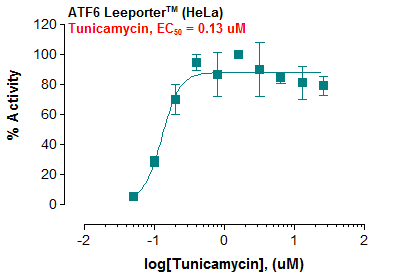Polyclonal Antibody to Anti-eNOS Antibody(Discontinued)

Figure 1: Anti-eNOS antibody(39-2130). Western blotting: Lanes: Anti eNOS at 0.5ug/ml, Lane 1: HELA Whole Cell Lysate at 40ug, Lane 2: HEPG2 Whole Cell Lysate at 40ug , Lane 3: COLO320 Whole Cell Lysate at 40ug. Predicted band size: 133 kDa: Observed band size: 133 kDa.
Roll over image to zoom in
Shipping Info:
For estimated delivery dates, please contact us at [email protected]
| Amount : | 100 μg/vial |
| Isotype : | Rabbit IgG |
| Purification : | Immunogen affinity purified. |
| Content : | Each vial contains 5mg BSA, 0.9mg NaCl, 0.2mg Na2HPO4, 0.05mg Thimerosal, 0.05mg NaN3. Reconstitute : Add 0.2ml of distilled water will yield a concentration of 500ug/ml. |
| Storage condition : | At -20˚C for one year. After reconstitution, at 4˚C for one month. It can also be aliquotted and stored frozen at -20˚C for a longer time. Avoid repeated freezing and thawing. |
NOS3(Nitric Oxide Synthase 3), also called ENOS, a nitric oxide synthase that generates NO in blood vessels and is involved with regulating vascular tone by inhibiting smooth muscle contraction andplatelet aggregation. The NOS3 gene is mapped on 7q36.1. Variations in this gene are associated with susceptibility to coronary spasm. Fulton et al.(1999) concluded the eNOS is an AKT substrate linking signal transduction by AKT to the release of the gaseous second messenger nitric oxide. AKT mediates the activation of eNOS, leading to increased nitric oxide production. Inhibition of the PI3K AKT pathway or mutation of the AKT site on eNOS protein at serine-1177 attenuated the serine phosphorylation and prevented the activation of eNOS. RT-PCR analysis showed that expression of NOS3 in human umbilical vein endothelial cells(HUVECs) and human aortic vascular smooth muscle cells(HAOVSMCs) was inversely proportional to that of NOS3AS.
Western blot : 0.1-0.5μg/ml; Immunohistochemistry(Paraffin-embedded Section) : 0.5-1μg/ml
For Research Use Only. Not for use in diagnostic/therapeutics procedures.
| Subcellular location: | Cell membrane, Membrane, Cytoplasm, Golgi apparatus |
| Post transnational modification: | Phosphorylation by AMPK at Ser-1177 in the presence of Ca(2+)-calmodulin (CaM) activates activity. In absence of Ca(2+)-calmodulin, AMPK also phosphorylates Thr-495, resulting in inhibition of activity (By similarity). Phosphorylation of Ser-114 by CDK5 reduces activity. |
| Tissue Specificity: | Platelets, placenta, liver and kidney. |
| BioGrid: | 110909. 46 interactions. |
|
There are currently no product reviews
|
















.png)












